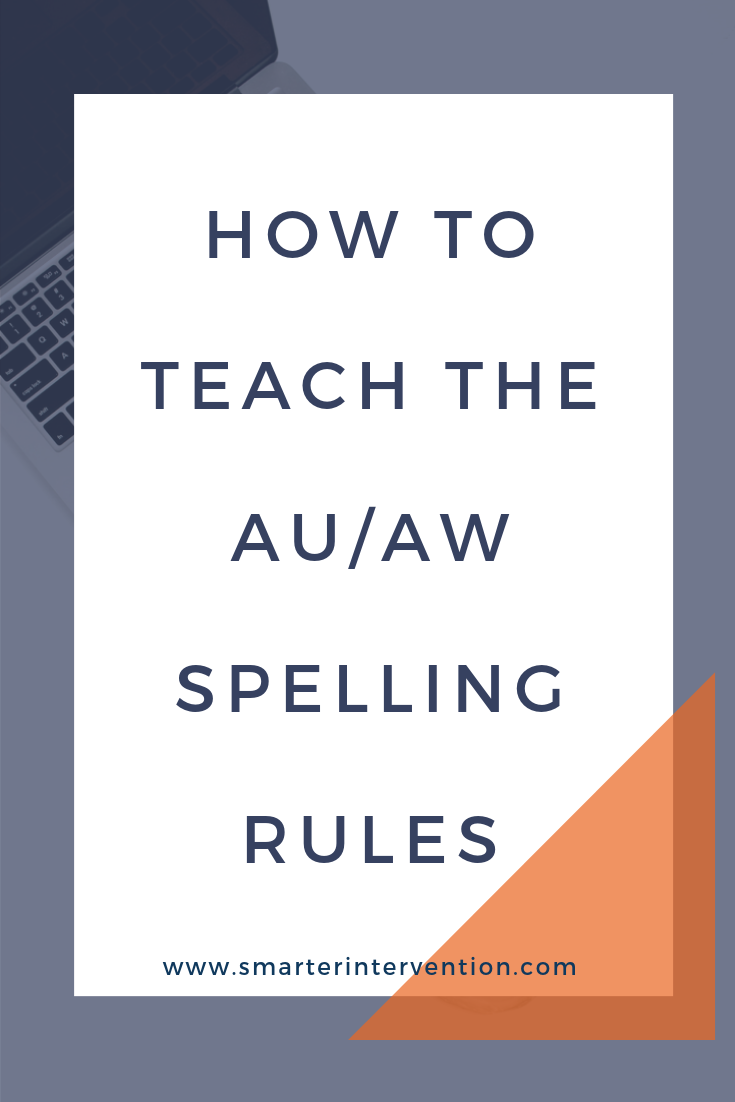How to Teach the au/aw Spelling Rule
Is it just us or does it seem that there are a ton of rules in the English language?
If you feel like spelling can be tricky to teach, you are not alone! Especially when it comes to vowel teams (where you have two vowels working together to make a new sound), things can get extra tricky!
Today we want to talk about one of the vowel digraphs. Let’s start at the beginning -
What is a Vowel Digraph?
A vowel digraph occurs when two vowels work together to create one sound (e.g., rain, green, goat, moon, etc.). AU and AW are both examples of a vowel digraph because they work together to create a short /o/ sound. Now this one is a bit interesting because there are some regional dialects that come into play on pronunciation.
How To Teach AU & AW - Spelling Process
When teaching spelling, we like to use a 4-Step Process:
1 - Identify how many syllables are in the word
We like to have students scoop the syllables, this is important because each syllable needs at least one vowel sound (which might be a vowel team syllable like in au or aw!)
2 - Identify how many sounds are in the word
We like to have students underline or dot the number of sounds they hear.
3 - Identify the type of sound
Is the sound a vowel sound or a consonant sound? If it is a vowel sound, where do we hear this pattern within the word (the middle? the end?) We can also think about the frequency of occurrence for the pattern (au occurs 66% of the time and aw occurs 34% of the time so if we need to guess we should pick au!)
4 - Identify the type of syllable
This can be a very helpful step for students in determining whether the word should be spelled with an “o” as in dog versus an “au” or “aw” for daug or dawg which would be pronounced very similarly.
Explicitly Teaching the au/aw Vowel Teams
When we teach a new pattern we start by sharing the pattern, having students practice writing the pattern while saying the sound(s) the pattern makes. In this case “A, U, says /o/” and “A, W, says /o/.”
We provide a visual with a keyword or key phrase. For example, our key phrase for au/aw is “Yawn, I have to do the laundry” and so we provide a picture with a person yawning and a picture of the laundry and have students practice associating the au/aw pattern with the words “yawn and laundry.”
We then provide explicit instruction on the rules the pattern follows. We use au to spell /o/ in the middle of a word or syllable and we use aw to spell /o/ in the middle or at the end of a word or syllable. Since both ‘au’ and ‘aw’ can go in the middle of a word, students might have a harder time remembering when to use which. If they are reading, just remind them of the sound. If they are spelling and aren’t 100% confident about which way to spell the word, encourage them to try both and see which one they feel is right.
For example, if a student was trying to spell the word “dawn” and was going back and forth, have them write out “daun” and “dawn.” Usually, once the student sees it, they are able to recognize which pattern is correct. This is also where we reassure them that spell check can be helpful ;)
We move in a building progression from the sound level to the syllable/word level and then have students generalize to the sentence level, paragraph level, and beyond. As we work through the building progression, we want to make sure we have cohesion and are supporting students’ working memory. One of the ways we do this is by aligning the connected text passage to the keyword or keyphrase. So for example, when teaching AU and AW our passage is about whether yawns are contagious and a girl that didn’t want to do the laundry.
How do I get started?
If you need help mastering all these rules, we’ve got you. We put all the rules we teach together in our Comprehensive Rules Guide which you can grab here! It’s a fabulous place to get started.
Or, if you’re ready for the next step and you’re looking for comprehensive lesson materials to explicitly teach all of the phonogram patterns, you can check out our systematic phonics-based curriculum, Delivering SMARTER Intervention here.




